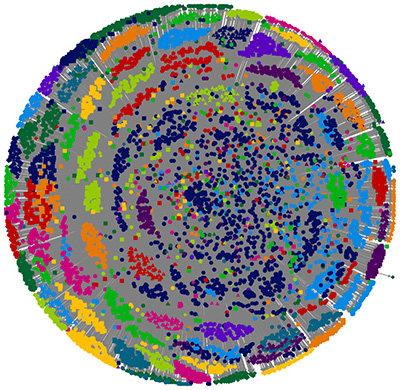“Exploring Social Media with NodeXL Basic” is a two-hour session that introduces some of the social media data extraction and network graphing functionalities of an open-source and freeware tool NodeXL Basic. This event will be 1:30-3:30 p.m. Friday, April 15, in 401B Hale Library.

- Ever wonder what sorts of #hashtagged conversations may be occurring on Twitter and who the discussants are? Curious about the social networks of particular @accounts on Twitter?
- Wonder what a public-facing social network looks like on Facebook? A private one?
- Intrigued by a related tags network from Flickr? An article network on Wikipedia? A video network on YouTube? A user network on YouTube?
Continue reading “Exploring social media with NodeXL Basic training April 15”


